We may earn money or products from the companies mentioned in this post. This means if you click on the link and purchase the item, I will receive a small commission at no extra cost to you ... you're just helping re-supply our family's travel fund.
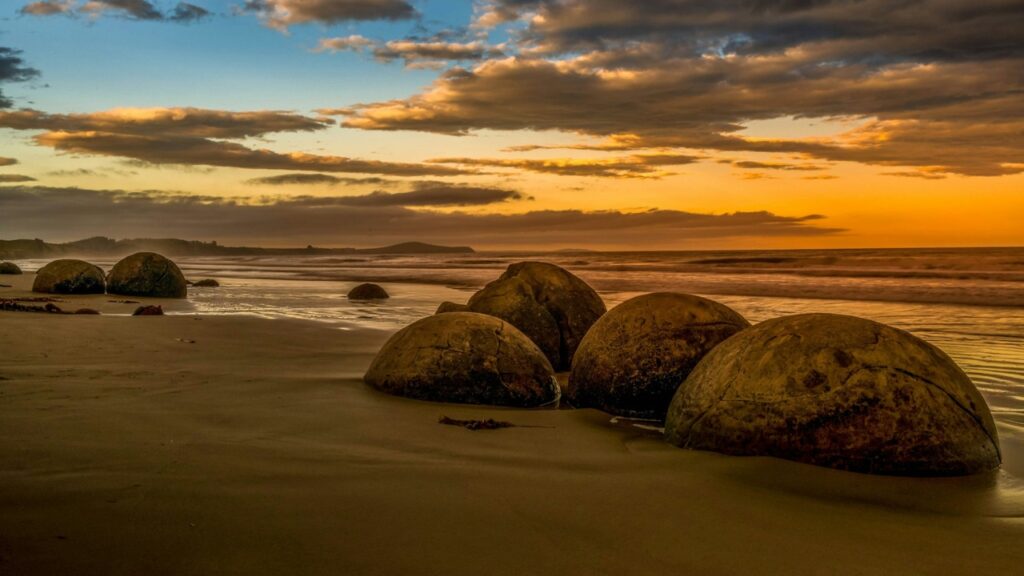
There are landscapes on our planet that defy easy explanation, places sculpted by time and immense geological forces into something otherworldly. Beyond the well-trod paths to famous canyons and mountains lie formations so strange and beautiful they seem borrowed from a dream. These are the Earth’s hidden masterpieces, geological wonders that few have had the privilege to see. To seek them out is to journey to the edge of the familiar, to stand before a testament of deep time and witness a beauty that feels both alien and profoundly elemental.
1. Bisti/De-Na-Zin Wilderness, New Mexico
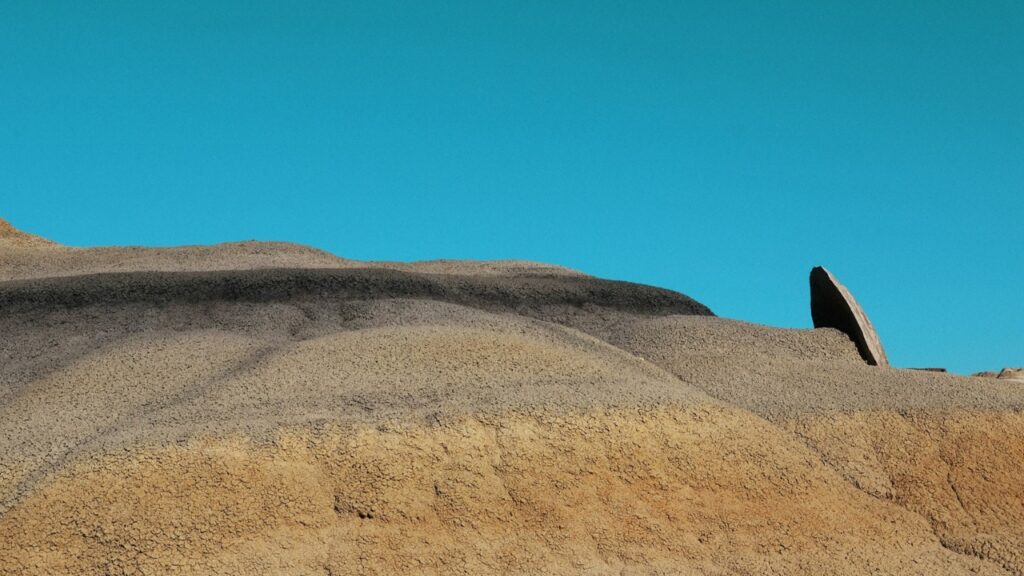
Step into a landscape that feels like another planet. In the high desert of New Mexico, this wilderness protects a sprawling badlands of bizarre rock formations. With no marked trails, you must navigate by landmark through a silent, natural sculpture garden of mushroom-shaped hoodoos and petrified logs. Millennia of erosion have sculpted the soft shale and sandstone into intricately layered hills that change color with the passing sun. It is a place of stark beauty and profound quiet that demands self-reliance and rewards you with true solitude.
2. Tsingy de Bemaraha, Madagascar
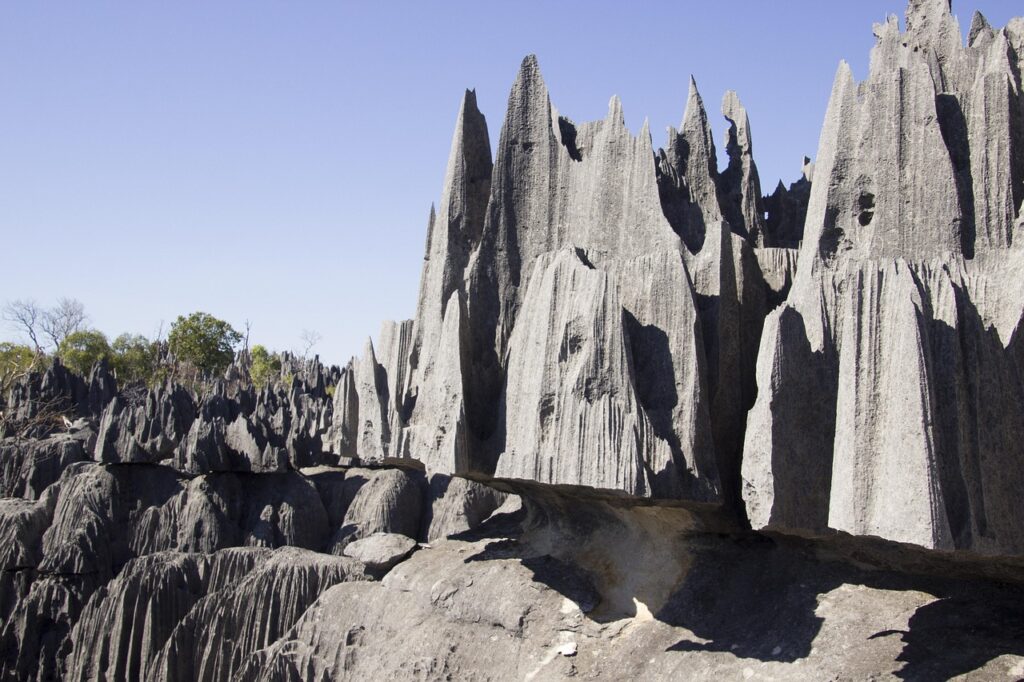
Welcome to a forest made of stone. This remarkable landscape in western Madagascar is a dense concentration of towering limestone karsts, eroded into a labyrinth of sharp, needle-like spires. To navigate the “tsingy,” which means “where one cannot walk barefoot,” you must cross suspension bridges and clip into via ferrata-style cables. Dangling over the chasm, you get a thrilling perspective on the otherworldly terrain. This vertical world is also a unique habitat, sheltering rare lemurs and birds that have adapted to life among the stone pinnacles.
3. The Richat Structure, Mauritania
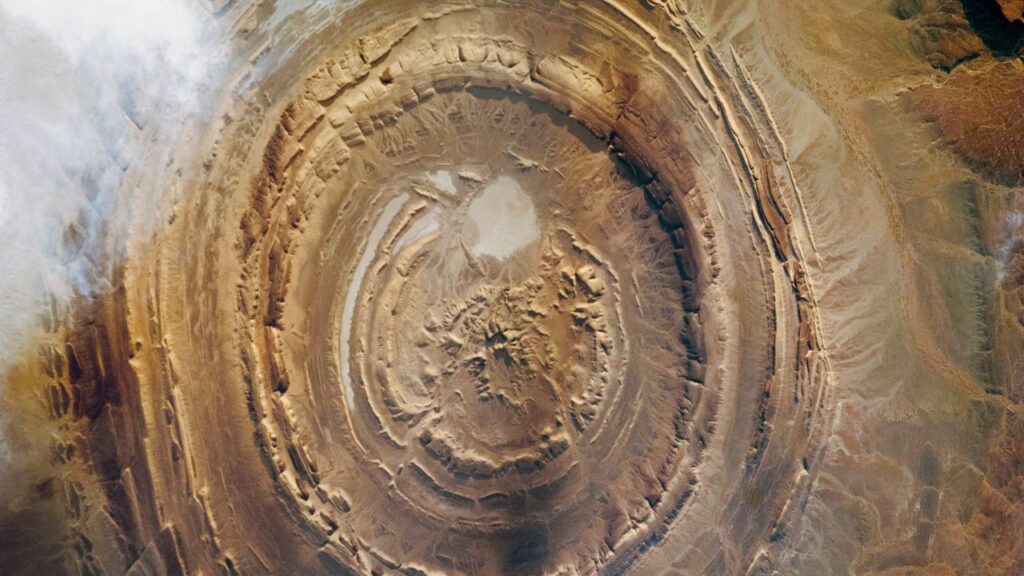
From space, it looks like a giant bullseye. Known as the “Eye of the Sahara,” the Richat Structure is a massive, deeply eroded geological dome nearly 30 miles in diameter. For years, scientists believed it was an impact crater, but it is now thought to be a symmetrical uplift worn down over 100 million years. Its sheer scale is difficult to grasp from the ground. To stand within its ancient, circular ridges, in the profound silence of the Mauritanian desert, is to feel the immense power of geological time in a truly humbling way.
4. Caño Cristales, Colombia
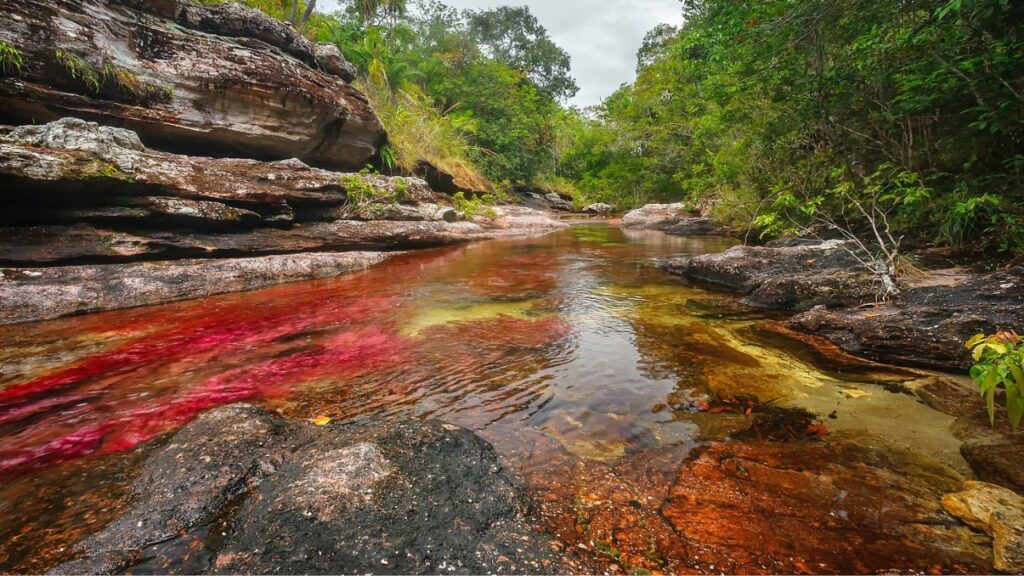
In Colombia’s Serranía de la Macarena, a short season from June to November transforms a river into liquid rainbow. A plant called Macarenia clavigera bursts with reds, pinks, and golds on its bed, blending with clear water to paint dazzling colors. Once off limits due to conflict, it now welcomes visitors who hike and swim in crystalline pools. For those who see it during its brief bloom, the river feels like something alive with magic.
5. Salar de Uyuni, Bolivia
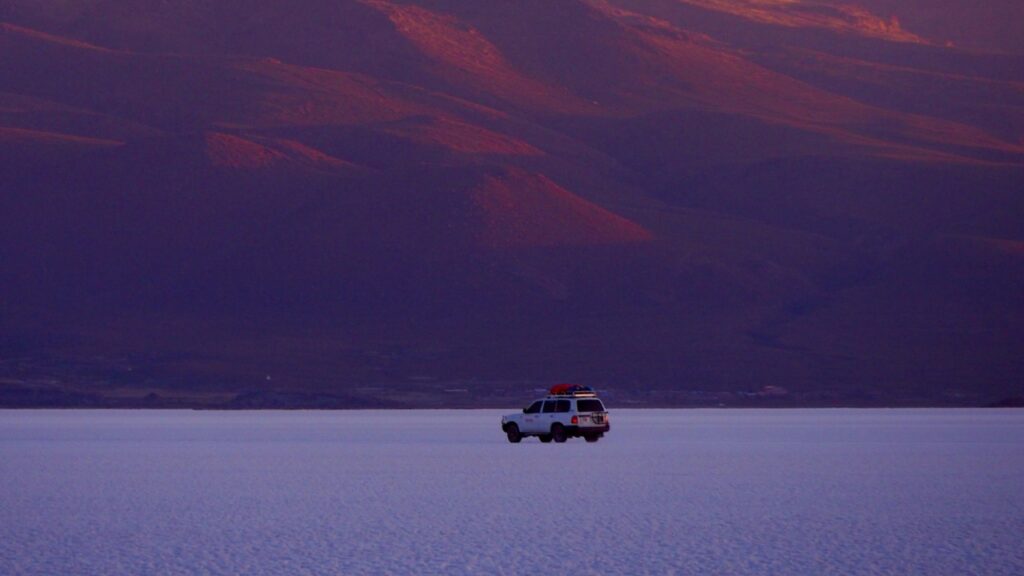
After a rain, the world’s largest salt flat becomes the world’s largest mirror. The thin layer of water on the vast salt crust creates a seamless reflection of the sky, completely erasing the horizon. Walking on the Salar during this time feels like stepping into the heavens, with clouds floating both above and below you. In the dry season, the ground cracks into huge, hexagonal tiles that stretch for miles. It is a profoundly disorienting and beautiful place where the boundary between Earth and sky dissolves into an endless expanse.
6. The Stone Forest (Shilin), China
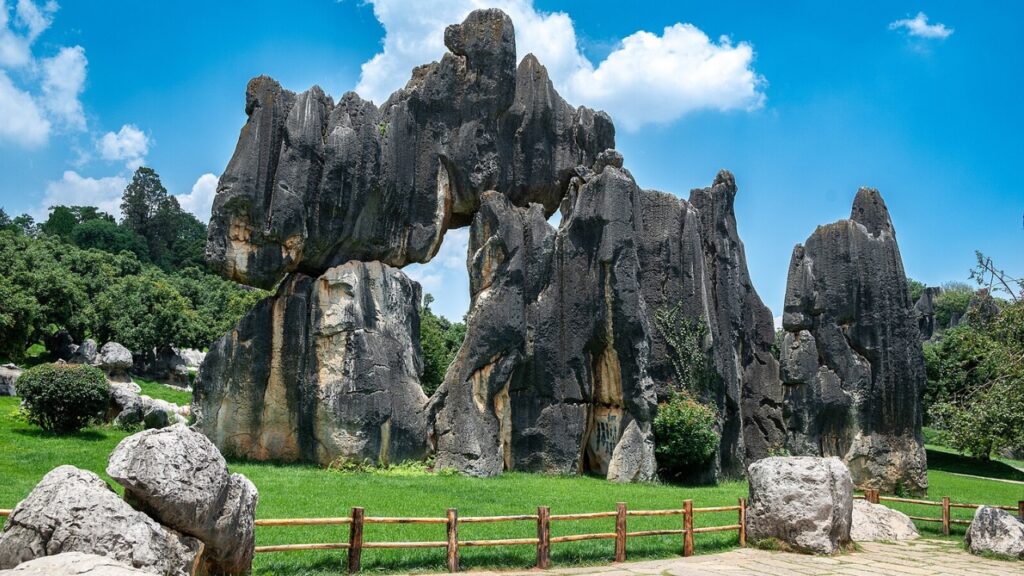
Imagine a forest where the trees are towering pillars of limestone. Located in China’s Yunnan Province, the Stone Forest is an incredible example of karst topography, sculpted over 270 million years as water eroded the bedrock. Winding paths lead you through a maze of these stone monoliths, some rising over 100 feet. You can get lost in the labyrinth, discovering hidden caves and quiet ponds. It’s a landscape pulled from a traditional Chinese painting, a place of serene, almost mystical beauty tied to local legends.
7. The Moeraki Boulders, New Zealand
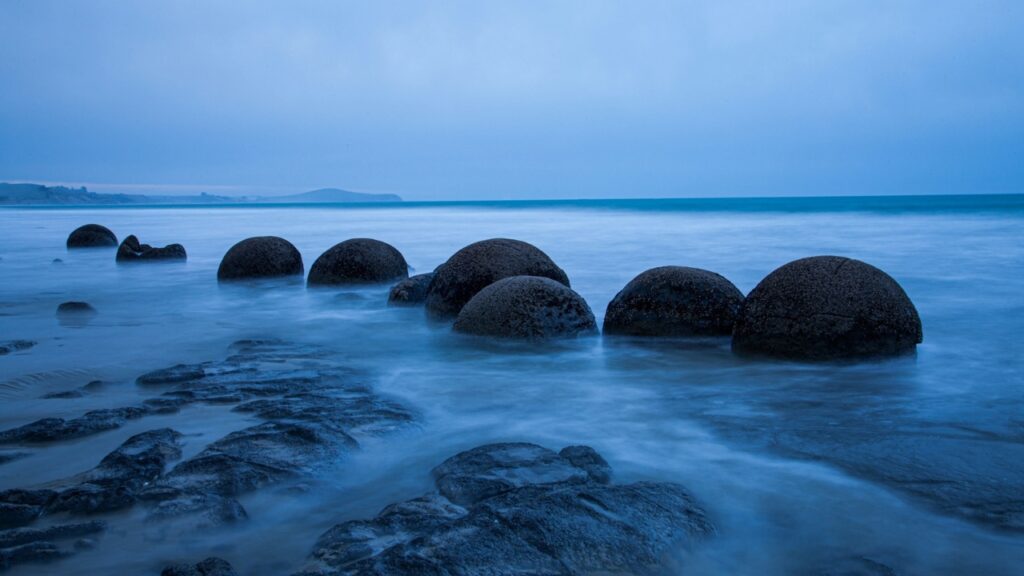
Scattered along New Zealand’s Otago coast like giant marbles, the Moeraki Boulders are a true geological curiosity. These unusually large, spherical stones were formed from ancient seabed sediments over 60 million years ago. As the soft coastal mudstone erodes, these hard, fossilized concretions are revealed, some perfectly smooth, others cracked open like hatching dragon eggs. To see them at sunrise, half-submerged in the tide, is to witness a strange and beautiful scene that has fueled local Māori legends for centuries.
8. The Great Blue Hole, Belize
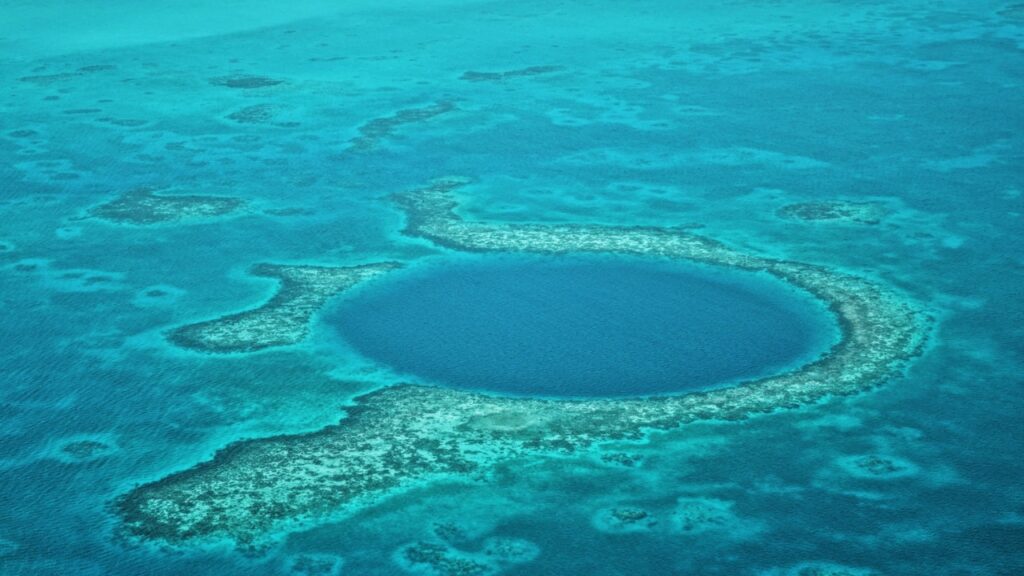
From the air, it is a perfect circle of deep, dark blue set in the turquoise shallows of the Caribbean. The Great Blue Hole is a massive underwater sinkhole, over 1,000 feet across and 400 feet deep. It was once a dry cave system during the last ice age, but it flooded as sea levels rose. For experienced divers, descending into its depths is a stark transition from a vibrant reef to a silent, eerie abyss. You pass giant, submerged stalactites in the darkness, a direct encounter with the planet’s deep geological past.
9. Cave of the Crystals, Mexico
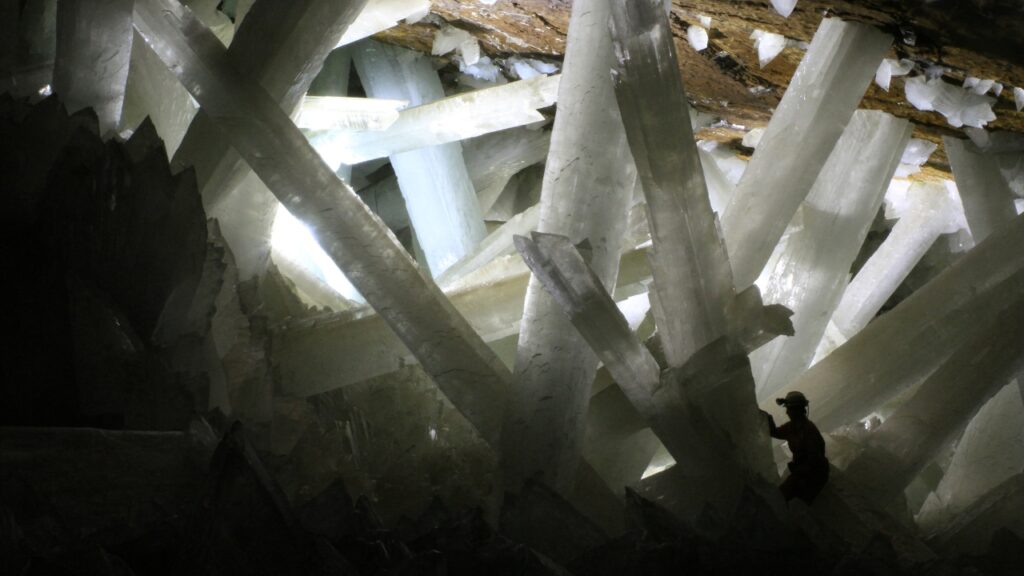
Beneath Chihuahua’s Naica Mine lies a cavern of impossibilities. The Cave of the Crystals holds the largest natural gypsum crystals on Earth, beams over 30 feet long grown over half a million years in hot, mineral-rich water. With temperatures of 136°F and near 100% humidity, survival inside is measured in minutes. Sealed since 2017, it remains off-limits, a hidden cathedral of Earth’s geology few will ever see.